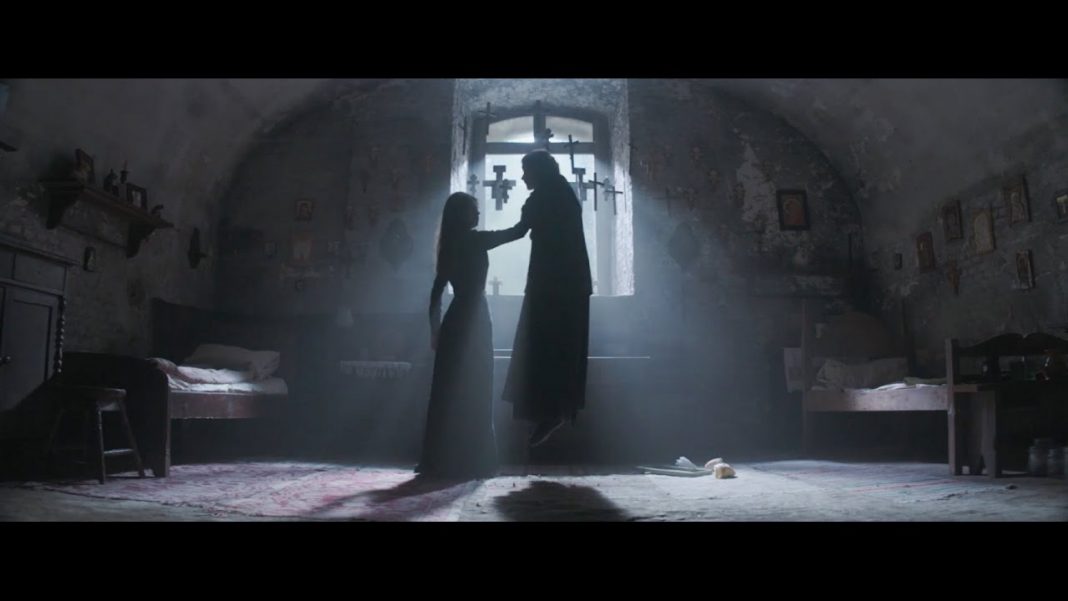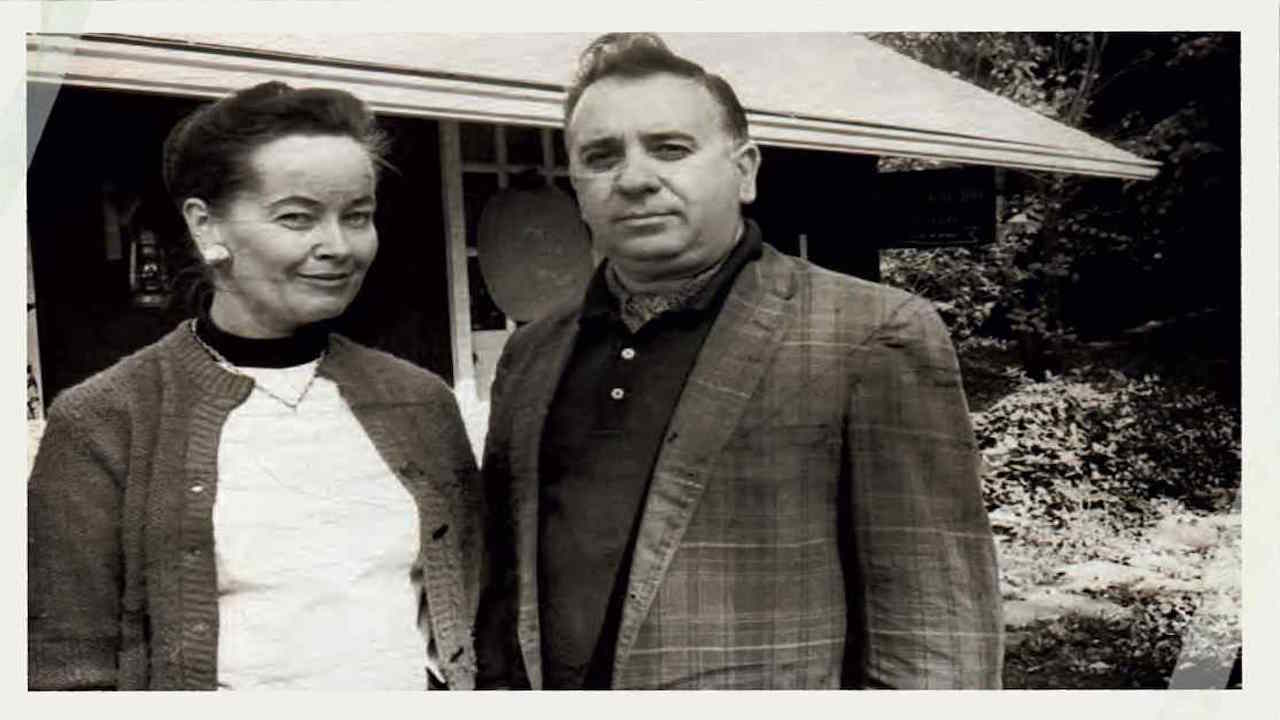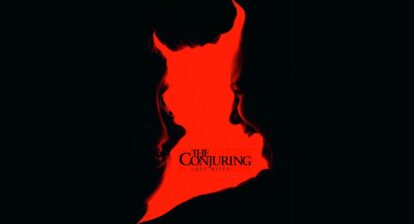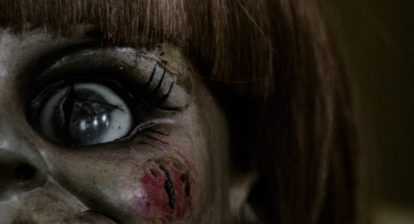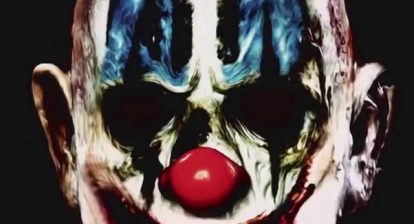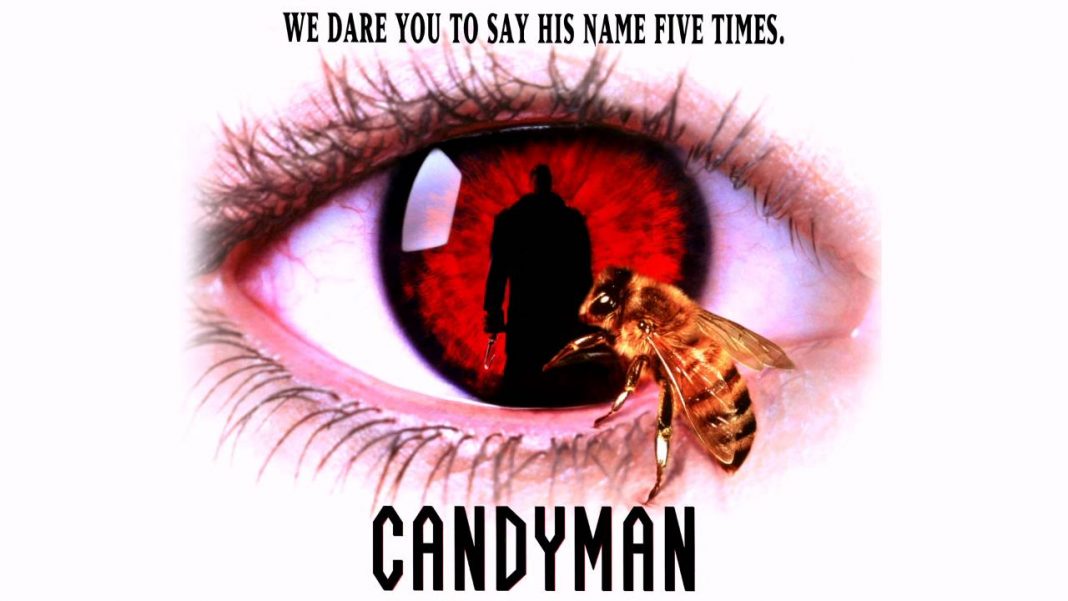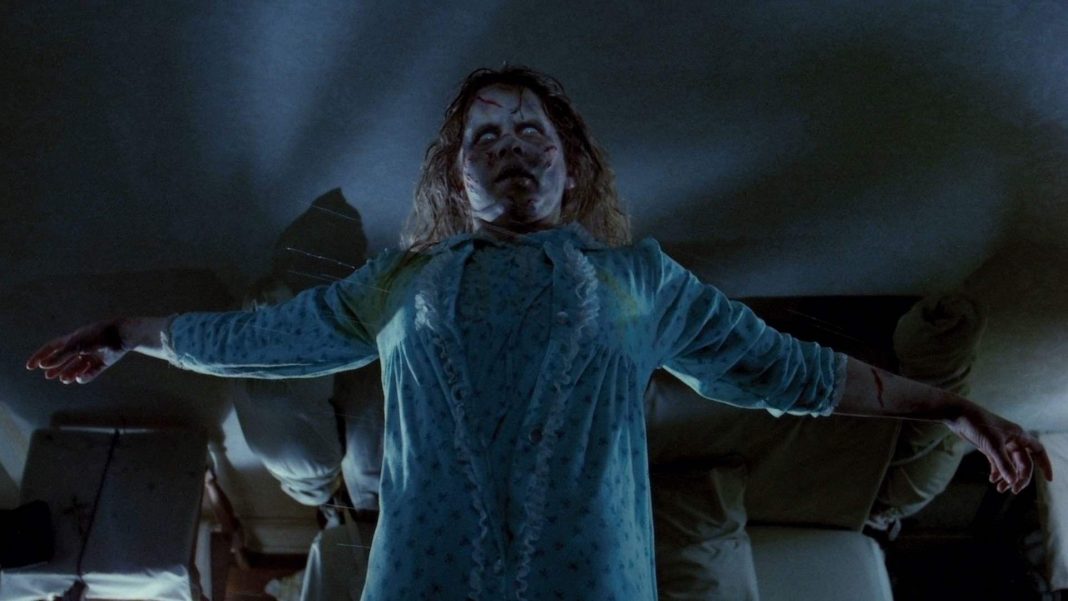Twin brothers Chad and Carey W. Hayes burst onto the horror scene in 2005, penning House of Wax. Since then, they’ve written The Reaping, Whiteout, and the first two installments of one of the most successful horror franchises of the last decade, The Conjuring.
Their latest, The Crucifixion, follows Nicole Rawlins (Sophie Cookson) as she investigates an exorcism in Romania that killed the woman it intended to save. As Rawlins aims to prove that the priest has committed murder, something sets its sights on her. Based on real events, The Crucifixion is available on Amazon and iTunes now and headed for DVD and Blu-ray December 5th.
We caught up with the Chad and Carey to talk about it.
Wicked Horror: The Crucifixion has a lot of great moments—both beautiful and horrifying—in Romania. How much of that was scripted and how much was spotting a great location and then shooting it?
Carey W. Hayes: Chad and I, when we write we’re very descriptive in what we do. A lot of it is the screenplay. A lot of the stain glass, the way crosses are, and churches and how old they are were very important in this story. But when you get to location sometimes they can’t find it.
Chad Hayes: In The Crucifixion they built the Church for us on the lot and built it from the way it was described in the screenplay.
CWH: But in the script Sophie’s character Nicole drives down an isolated stretch of pavement that winds through the Romanian countryside.
CH: We might write that, “Streetlamps might dimly light the cascading fog” so then they’ll know to bring in rain, fog, lights along the road.
A lot of it of course depends on the budget. If you can find something in a practical sense then it’s way cheaper to use that then to have to build the set, but a lot of times you’re under the mercy of weather. In this sense, we did a lot of shooting in a soundstage as well and that just allows you to control the lighting or not.
But when we were at that pig farm, we were really at a pig farm.
CWH: Oh my God.
CH: That was the worst smelling place I’ve been in my entire life.
CWH: At the same time though, the climax scene was all built because we had to rig Sophie to hang upside down. We had to control that environment.
CH: That was all a buildout.
CWH: The reason we shot in Romania was because, A.) it was a Romanian story, but also because of the budget of the film. Your dollar goes a lot further over there then it does here.
WH: You’ve had a lot of success adapting films (House of Wax) and real life events (The Conjuring, The Conjuring 2, The Crucifixion). How does your approach differ when you’ve got source material versus when you’re working from scratch?
CWH: That’s interesting. When we’re working with source materials—our latest movie at Dreamwork we adapted The Turn of the Screw, the Henry James novel—how do you take multiple pages and condense it into an hour and half? Chad and I always start telling the story that we want to tell before we start outlining. We start verbally going through it and picking what we want to do and the highlights. Some things you have to sacrifice. You can’t fit everything in.
CH: We loved the research in The Crucifixion in particular. It was a story that we came across, and we found out that it was true. We tried to do, at least in genre, a lot of true stories because people can relate to them. They can look them up and Google them and find out that we’re not making it all up. In that sense, did a tremendous amount of research on what the Sophie Cookson character went through. She was fictionalized in that story so we could tell the story we want from a separate point of view that we combined from three separate points of view of which that film is about, depending on who you talk to.
WH: What’s your research process like? Do you do interviews? Do you read books? Do you do both?
CH: Everything.
CWH: We do a lot of books. For The Crucifixion it was mostly online because it was such a big story in Romania. A true story.
CH: It’s actually a very successful play over there as well. As far as the interviewing, we spent hours and hours and hours on the phone with Lorraine [Warren] for The Conjuring. And then we read as much stuff as we could on the Warrens and the Perron family. You just pull it all together and you end up with a polyphony of information. Then it’s your job as a writer to tie it all together in a good story sense.
CWH: You have all the materials, now how do you want to build the house?
CH: We read a lot. We get submitted a lot of things. Original material is really fun. Gore Verbinski—we’re working on a film with him. He approached Carey and I with a really cool idea that he’d been noodling in his head. We pitched it out and set it up at Fox, and now we’re developing the script with him, which is kind of a first rough, which has been really fun. He’s such a great director.
WH: Faith is a theme in The Crucifixion as well as The Conjuring series. Does it play a part in your personal lives as well?
CH: For sure. We’re both believers.
CWH: Absolutely. We get asked that question quite a bit, and people always say, “Aren’t you afraid of diving into that world? Delving into that world? Aren’t you afraid of something coming after you?” And we’re both very strong believers and have our protection but we believe these stories need to be told because we’re storytellers. Hopefully somebody will walk away with a little bit more faith in themselves.
CH: It’s funny, the media has been coming back to Carey and I as adding redemption to the genre film. We’re making genre films where, yes, you have a happy ending. The good guys win. You don’t pan over to little Donnie with red eyes, telling me that he’s going to be in the sequel. It’s like, “Hey. You actually won.”
It’s a cool theme. Particularly in The Conjuring films, it crosses over between secular and non-secular audiences. A lot of pastors and priests have been using that film in youth groups and doing screenings for kids and adults to open dialogue and conversation about the demons that live in the real worlds. A lot of people are like, “Is that true?” And yeah, you go talk to the Perron family. A couple of them are still messed up from it.
CWH: At the core of these movies is that no matter what dramatic things they do go through, is strength of family. Even the brother and sister in House of Wax. Hilary Swank’s character in The Reaping. Her return to faith. It’s part of the redemptive element. We love happy endings.
WH: Most horror franchises are built around monsters. You’ve built The Conjuring around the heroes, Ed and Lorraine.
CH: That was because we saw the Warrens as a franchise. Every good screenwriter would like to make multiple movies on something that nobody’s done that’s really cool. It was very early in the development of The Conjuring we decided to switch the POV to Ed and Lorraine Warren we’ve got a franchise, and it worked.
CWH: We also thought about, if you had just the parent’s story, as horrible as was, it was a regular haunting story. Family moves into the wrong house. But if you have the Warrens, that’s like calling 911 and having the police show up because they show up at the climax, when things are the worse. Our whole thing was, what rattles them? What’s going to shake their world on a personal level as well?
That was the fun part, because that changed up the horror dynamic a little bit. Their introduction into that world in The Conjuring and The Conjuring 2. They have case files that are so thick. I’m sad we didn’t get to meet Ed before he passed away, but when Lorraine talks about him, it’s like he’s there.
CH: It’s really cool.
CWH: They’re love story is so, so rich.
CH: Not particularly in The Crucifixion, but in The Conjuring, it’s a love story set in a genre setting. Two people that are just madly crazy about one another, so you really, really care.
Swinging back to The Crucifixion, you have Sophie realizing that if the demonic world exists, then the Christ world exists. Therefore, my mother is exactly where she always wanted to be. There’s redemption to that to, and a settlement in her character’s personality. She comes to term with her mother’s death because of that.
WH: When did you start writing together?
CH: We’ve been writing together since we were in high school. We wrote our first screenplay when we were sixteen years old. We just loved the film business so much and didn’t know what to do with it, but wrote our first screenplay and really got hooked after that.
WH: Did that ever get produced?
CH: [Laughs] No. But it helped us gain our entry into the film business because we lived next door to a country music singer up in Lake Tahoe, a guy named Hoyt Axton. We didn’t ever really know him, but we knew he was a famous singer. He wrote “Jeremiah was a Bullfrog” (formally known as “Joy to the World”) and “The Pusher.” We introduced ourselves to him and asked him to read our screenplay, and he did and he liked it.
CWH: He brought us down to LA to introduce us to some people he knew.
CH: It just blossomed into relationships after that. We ended up going to UCLA, and once we were there we looked up a handful of those people and kept working, kept writing.
CWH: He was always very encouraging to us, and to have someone from the entertainment business encourage you to keep writing at this young age, it worked. That’s why Chad and I mentor a lot of young kids.
CH: This guy went out of his way for us, for sure. One of the people he introduced us to was Charles Stern. He was an actor’s agents for commercials. We had looked him up because he was one of the guys we’d met on our first trip to LA saying, “Let’s get you down here. Let’s get you going in the acting world.” That’s what we started doing. We both became actors. Because we’re identical twins we did every twin thing you can imagine. That really gave us, financially, enough freedom to continue pursuing our dream of writing films.
WH: What are you biggest influences creatively?
CH: Stephen King when we were kids for sure. We never set out to write genre movies. We were writing for Disney, and action films. Our first movie was House Of Wax with Joel Silver, and Joel owned the title to The House of Wax. We had always wanted to write a genre film, so we went away and thought up that story without seeing the movie purposefully and came back. That just kind of launched our career when it made some money. We did The Reaping after that, which was Hilary’s movie, and then Whiteout.
They didn’t make it but we did a rewrite of The Blob over at Paramount. We kind of made that a dark comedy. BLOB stood for Biologically Lethal Organic Bomb and there was nothing slow about it at all.
CWH: It was quite fun.
CH: And then big stuff. We weren’t credited but we did a couple of years work on San Andreas the earthquake movie. We don’t just stick to genre. We have a western over at New Line right now and Warner Brothers. We just love to write.
CWH: A good story is a good story no matter what genre it drops into. It’s just kind of fun.
WH: What can we look forward to seeing from you next?
CWH: Our Dreamworks movie. We’re shooting in Ireland in January. I don’t know what the release date is.
CH: It’s called The Haunted. Yeah. Dreamworks Amblin. Steven Spielberg is executive producing it. Floria Sigismondi is directing it. MacKenzie Davis is the star. That starts in January. You can probably look for that a year out. I don’t know what the release date is.
CWH: The Devil Came to Saint Louis is a television series we’re developing with Eli Roth directing the pilot and Lorenzo di Bonaventura producing.
CH: That’s the true story of Robbie Mannheim from The Exorcist. The Linda Blair character was actually a boy named Robbie so we went back to 1949 and we’re telling the whole possession story from the mother’s point of view. How it factures a family. What does it do to your community? What does it do to your relationship with your loved ones? Your husband? Your neighbors?
It’s a ten hour so that’s fun. We’ll see where it goes.
Then hopefully we’re going into production soon on the prequel to The Omen we wrote over at Fox with Antonio Campos directing that picture and that could be really exciting. We get to tell you where Damien came from. Watch out for that one.
